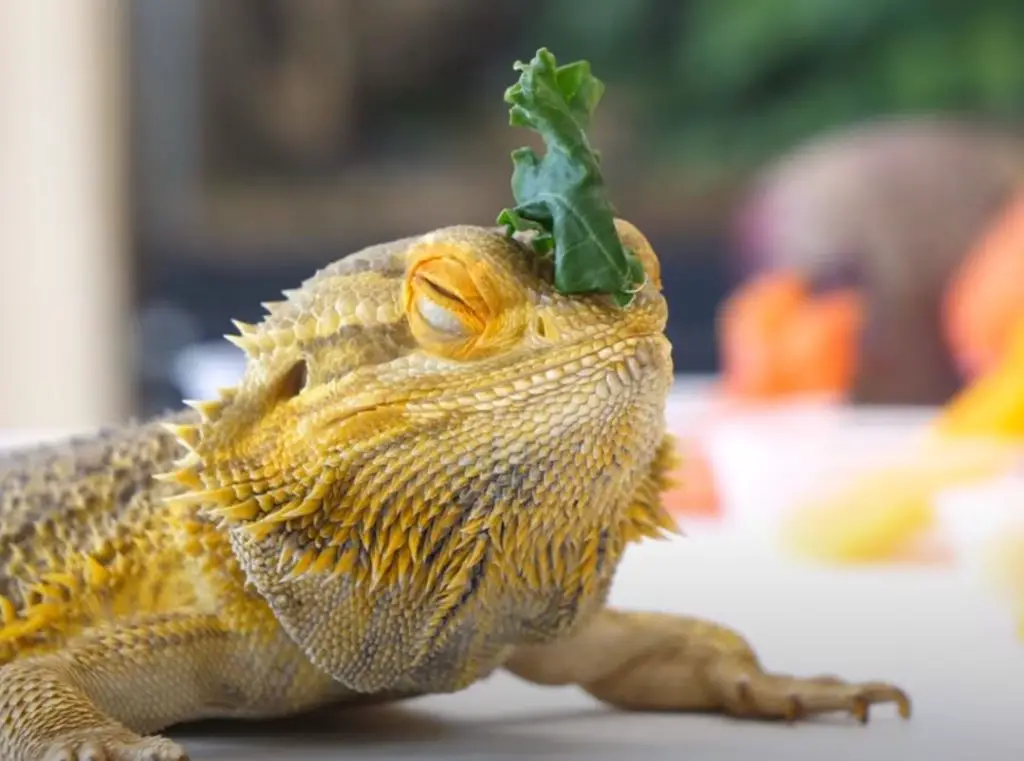If you are bearded dragon owners, you would be extremely worried when seeing your beardie start slowing down, looking lazy, start sleeping a lot, and wonder if something’s wrong with your beloved pet. However, there is a period of time that your pet will brumate, like the hibernation period of winter among other animals, which is completely natural.
We’ll talk about brumation in beardies right here in this article.
However, there are problems arising during brumation.
Therefore, you should have a profound understanding of what is brumation and know whether your bearded dragon brumation or dead.
Related Posts:
- Bearded Dragon Fat Belly: What Should You Do?
- Why Is My Bearded Dragon Lethargic?
- How to Fix MBD in Bearded Dragons?
- Why Is My Beardie Hissing at Me?
What Is Brumation?
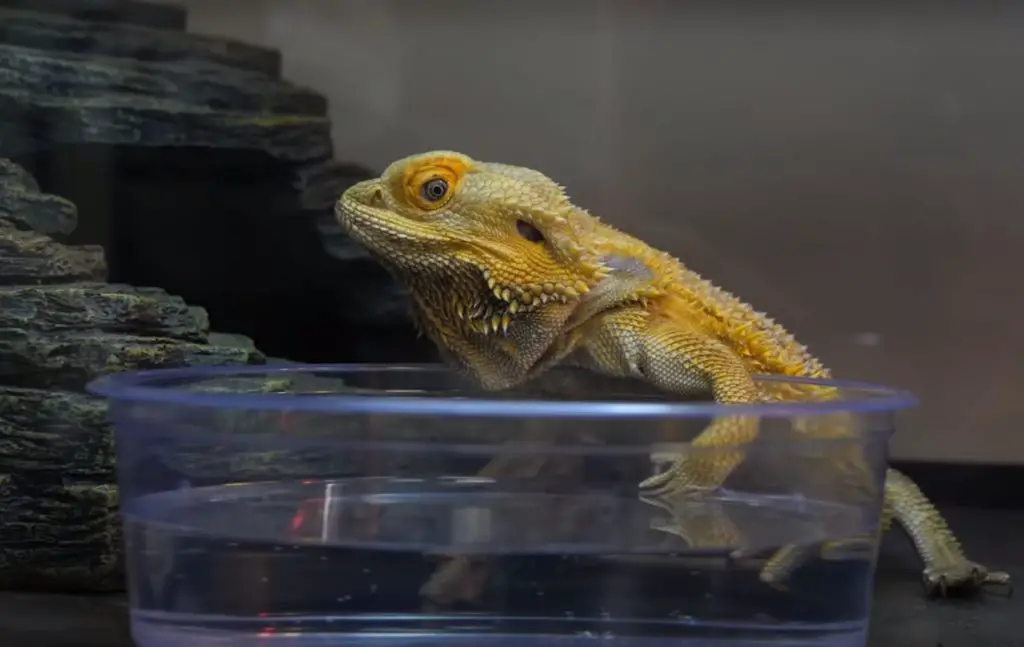
If you are still wondering about a bearded dragon brumation or dead, this article will help you to know what brumation is?
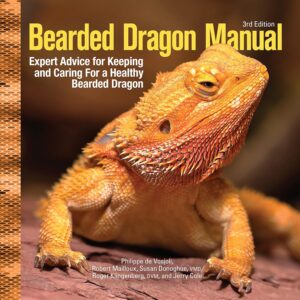 Actually, the brumating process which is quite similar to hibernation is a naturally occurring cycle that a lot of beardies can go through to adapt to the changing of seasons.
Actually, the brumating process which is quite similar to hibernation is a naturally occurring cycle that a lot of beardies can go through to adapt to the changing of seasons.
Beardies may brumate at any time throughout the year.
But they will mostly brumate during the winter or fall when they are unable to absorb enough warmth to properly digest their food as the sun grow weaker, daylight hours get shorter and the temperatures are colder.
During this period, his metabolism slows down significantly which leads to a highly great chance of energy and appetite.
Therefore, he may not eat, drink, defecate, or move for several weeks during this period.
Additionally, these animals may also bury themselves underground or go to the darkest and coolest part of their enclosure.
In specific, they will rest and nap on and off, without needing food or water.
Especially, their metabolism has evolved over thousands of years, which allows them to remain alive without food for as long as several months.
However, their vents will often pull in moisture from the soil to keep them sufficiently hydrated, just as a side note.
How Long Does Brumation Last?
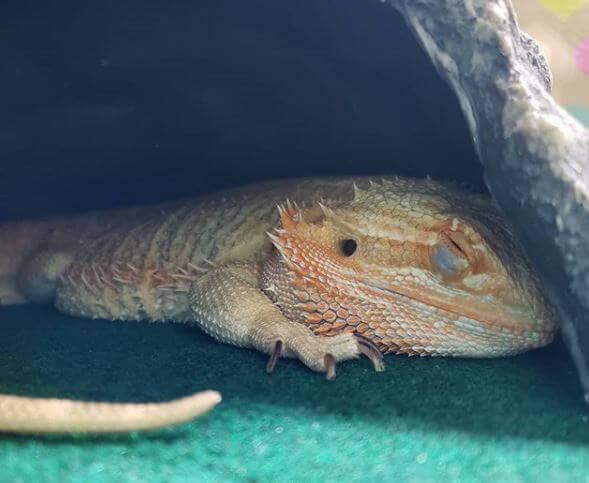
Typical duration ranges from a few weeks to as many as four months, i.e., from late autumn to early spring.
However, in captivity, the duration of this activity may vary based on the beardie, including age, gender, natural conditions, origin, and so on.
While some may never brumate or brumate only for a week, others may sleep for months!
During this period, you had better not disturb your pet.
Otherwise, you can cause the brumation cycle to increase.
For example, waking your pet every week for food or bathing can extend a 1-month brumation period to up to 3 months.
When Does Brumation Start?
The answer is that it will depend on what hemisphere you live in.
In specific, these animals living in the southern hemisphere such as in Australia are known to typically begin brumating around March/April and may remain brumating as late into the year as of August or September.
By contrast, those in the Northern Hemisphere such as United States, Europe, Canada, U.K, and so on will begin to brumate from November to February!
Do Bearded Dragons Eat During Brumation?
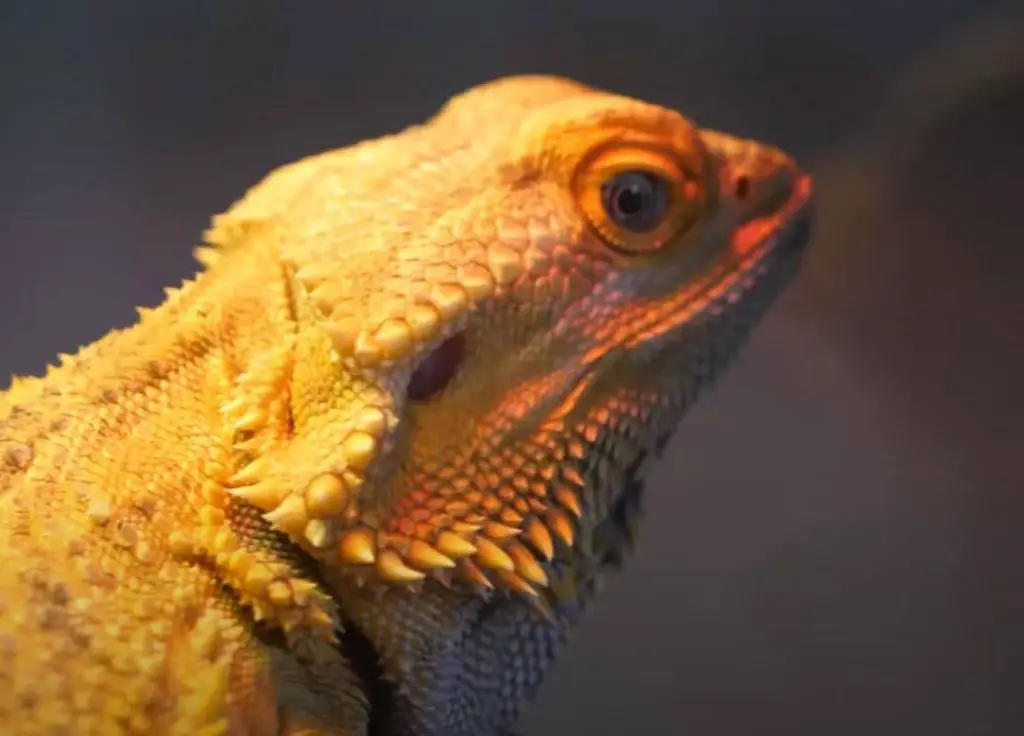
During the brumation period, it would be fine and natural for your dragon to stop eating and drinking as he will experience a drop in his appetite and a slowed metabolism rate.
Therefore, you shouldn’t disrupt him by forcing him to eat or drink water.
In case your pet can eat, gradually reduce the amount of food with no food offered in the last one to two weeks before turning off the heat and lighting source.
 Additionally, make sure he will digest and pass their food before being left alone again by encouraging your pet to bask under their UVB and bathing him daily until he has a bowel movement.
Additionally, make sure he will digest and pass their food before being left alone again by encouraging your pet to bask under their UVB and bathing him daily until he has a bowel movement.
When the heat and UV light sources are off, you mustn’t provide your beardie with any food as he cannot digest without heat.
However, make sure you will give your beardie safe drinking water to keep him hydrated as your pet will sporadically drink it
During this period, your dragon will not lose any weight even without drinking and eating anything.
However, in the case of a small weight loss, it will be due to dehydration.
Your pet can also lose weight in the event of parasites. So, it would be a good idea to have your beardie checked at the vet prior to brumation to make sure your beardie has no parasites.
Related Posts:
- Can Beardies Eat Brussel Sprouts?
- Can Beardies Eat Rosemary?
- Do Beardies Eat Peas?
- Can Beardies Eat Squash?
- Can Beardies Eat Dill?
How to Tell If a Bearded Dragon Is Dead or in Brumation?
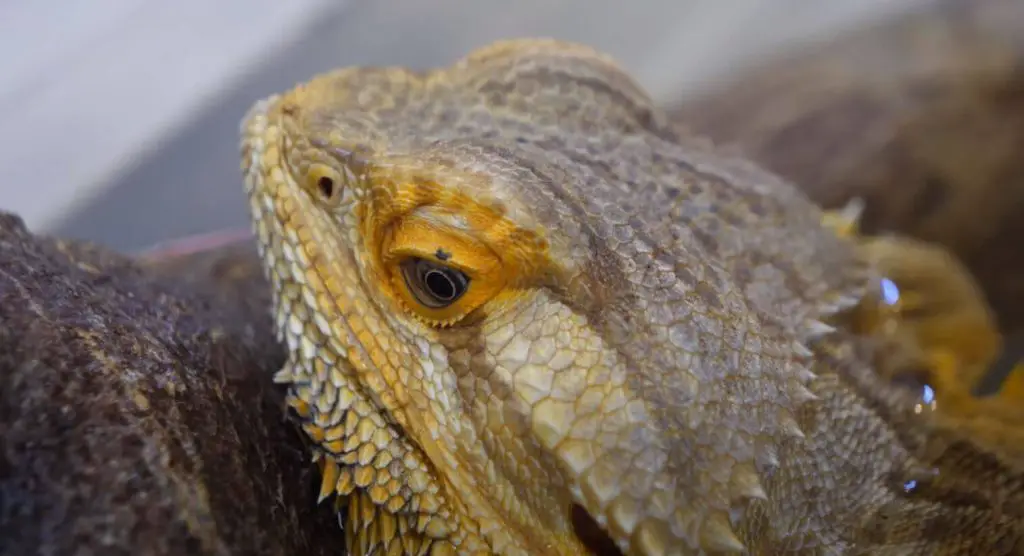
It is common for new pet owners to misdiagnose the signs of brumating dragons. This may lead to some pretty scary assumptions about the health of your pet.
This is because, during the brumation period, your beardie will stop eating, drinking, and moving for a while.
Maybe in some cases, you will wonder how to know Bearded Dragon Brumation or Dead.
Therefore, you had better have a look at bearded dragon death signs before moving to how to check beardie Brumation or Dead.
Signs of a Dead Bearded Dragon
Not responsive if you put it on its back or side (dragons can’t breathe properly on their back)
- No breathing.
- Lack of any movements
- When rigor mortis sets in – he will become stiff
- The color will change – due to blood pooling (pale on top and can get a black beard and below
- Fluids coming out of the nose and mouth
- Pupils not reacting at all to bright light – just stay dilated
- Not blinking when you touch its eyelids
- Jaw looks limp and your beardie doesn’t bite on your finger if you put it inside of its mouth
- Eyes rolled back and sunken
- Bad smell after a few days
To make sure, you can come to meet a vet to perform a Doppler ultrasound to check for any blood flow in the body. A vet will also check for a pulse and see if he reacts to light at all.
Signs of Brumation in Bearded Dragon
As a pet owner, you may worry about your pet displaying strange behaviors and wonder whether your bearded dragon brumation or dead.
Before the brumation period, your beardie may show some bearded dragon brumation symptoms. And it is pointless to worry.
However, these signs are quite similar to some symptoms of illness, stress, injury, or parasite infestation.
Therefore, in case you are uncertain, it is good to get advice from your veterinarian.
Below are some signs of bearded dragon brumation that you may notice.
- Loss of appetite
- Lethargy
- Not defecating
- Refusing to bask
- Sleeping on the cool side of their vivarium, even in the day
- Burying themselves
- Sleeping a lot
- Difficulty being woken up
- Not interacting at all
Once you’ve realized your pet is preparing to brumate, it is best to just leave him alone and don’t force him to eat. Because force-feeding will only complicate his calendar on top of causing health issues.
Bearded Dragon Brumation or Dead?
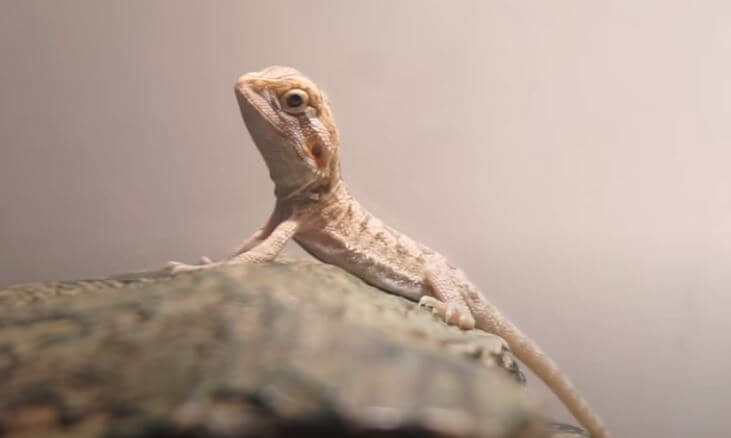
There are many ways to know whether your bearded dragon brumation or dead.
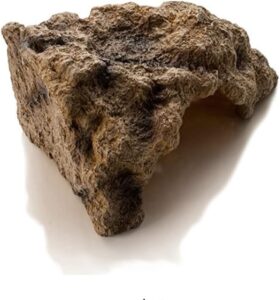 In case of your beardie being dead, it will lose its color, the eyes may drop down, and the body will get rigger.
In case of your beardie being dead, it will lose its color, the eyes may drop down, and the body will get rigger.
For instance, a gray beardie will turn white if he dies.
Other symptoms are a gaping mouth, sunken eyes, odd coloration, fluid seeping from orifices.
Also, a beardie will stop breathing while his breathing is very slow when he is sleeping or brumating
Another way to test it is by turning him/her on his back for a second.
If he’s okay, he will find it uncomfortable and struggle to right himself.
If there is no movement still, it is entirely likely your beardie is dead.
How to Care for Your Dragon in Brumation?
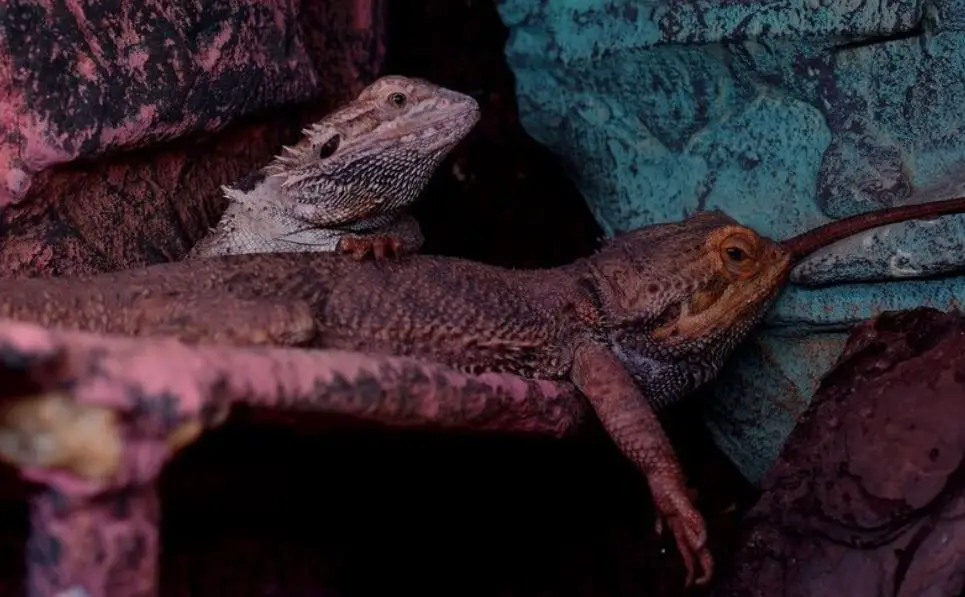
To make sure that the process of brumating goes as smoothly as possible, some measures should be taken to take care of your pet.
1. Get Them a Hide
When your pet brumates, he would like to bury himself under something to feel safe and secure.
Therefore, you can help your beardie by providing him with a hiding place that is just big enough for his body such as a cave or rock on the cool side of the tank.
You can also give your pet a safe substrate to burrow.
However, you should note that it would be okay with a damp substrate while a wet one as it will cause respiratory health problems. Similarly, a dry one may cause dehydration.
In this articles, we would like to give you the top 3 hides that you can find on Amazon.com
- Fluker’s Small Critter Cavern
- Zilla Reptile Habitat Décor Hideouts Bark Bends
- Penn-Plax Shale Step Ledge and Cave Hide-Out
2. Take Them to the Vet
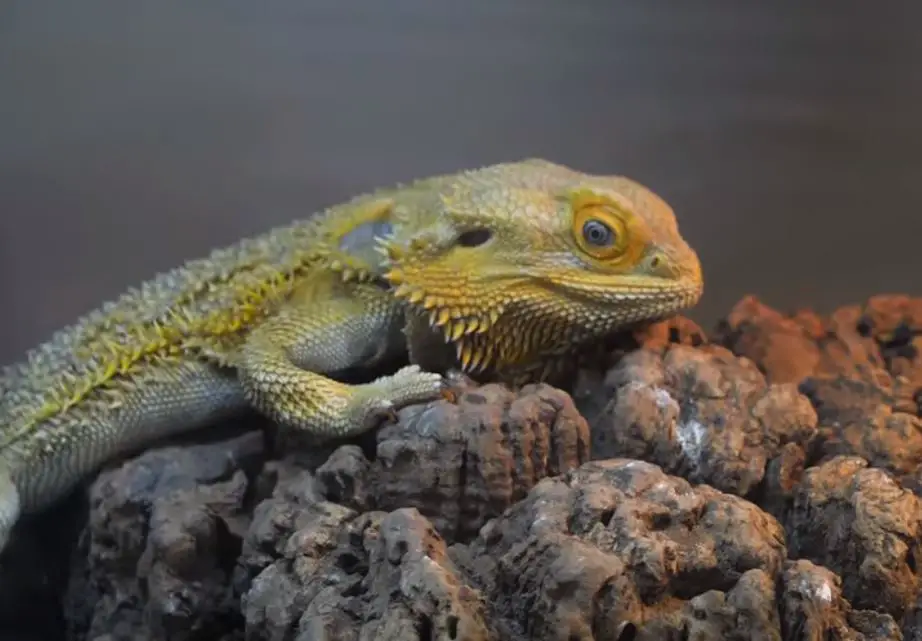
It is recommended to have you’re checked up by the veterinarian before he is set to brumate in case any health issues happen.
During brumation, if you notice that your pet loses a lot of weight or develops smelly stools, you should immediately consult the vet as these are often signs of illness or parasites.
3. Dial Down the Daylight
There are some cases that pet owners try to adjust the cage temperature or lighting to prevent their dragons from going into brumation.
However, it will be completely wrong to do this.
In other cases, some owners will turn off the lights and stop offering food to their beardies during brumation, and this is not recommended.
You had better gradually decreased the hours when your UV lighting and basking lamps are on from the 12-14 hours to 8-10 hours. And, you just reduce it by 30 minutes after each weak until you achieve the 8 hours.
Additionally, you continue keeping fresh food in the cage if your pet wants to eat some and bask a little but forcing him to eat is not suggested.
4. Keep Them Hydrated
While your dragon brumates, it is really important for you to make sure he stays hydrated.
As baths will help in boosting hydration and will not disrupt this pet so much, you should choose this option.
In specific, you can use a plastic bin or your bathtub no more than 2 inches, use lukewarm, and allow him to soak for 20 to 30 minutes.
However, you will need to ensure he won’t take in any water in his mouth as this can not only lead to pneumonia, but in more severe instances such as death by drowning.
In case your pet can be woken up or wake up on a weekly basis, you can simply drip some water on his snout. And see if they seem receptive to drink or you can give him a water bowl to drink.
In this way, you will avoid disrupting him from brumation.
After bathing time, you should dry your beardie entirely before placing him back in his vivarium as wet scales can lead to fungus.
If your dragon is awake, you can dry him gently and place him on his basking spot to let him fully dry, just make sure the temps are right.
5. Monitor Their Hunger
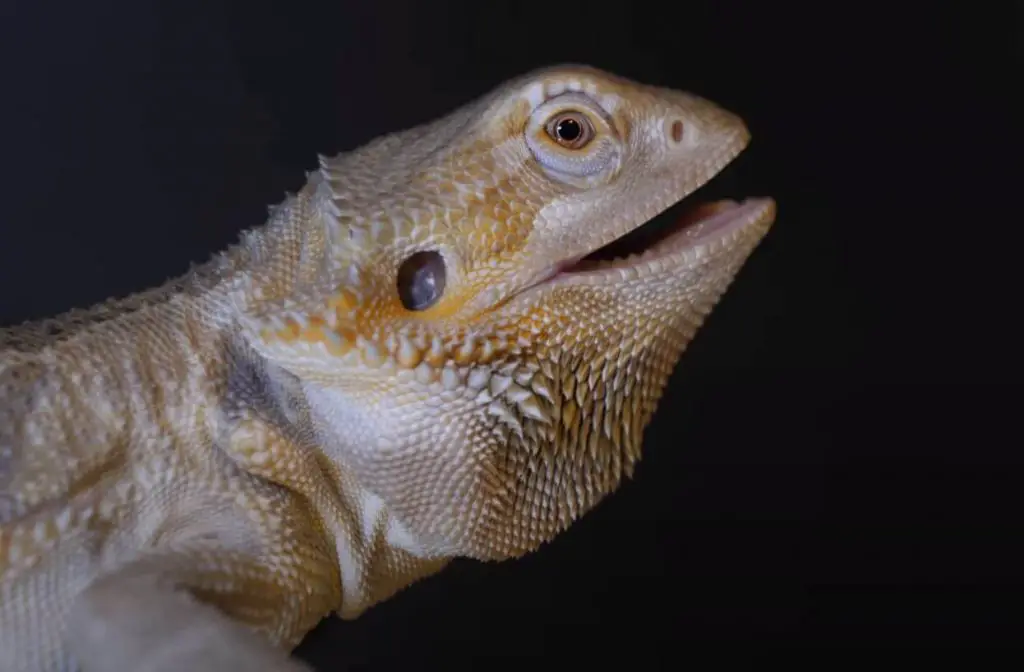
As I mentioned before, forcing your pet to eat is not recommended.
However, you can provide him with fresh food in case he seems hungry.
If he decides to eat, even just a little, you should encourage him to bask to digest the food by removing his hide.
You can also promote a bowel movement by simply waking him up once daily for a quick soak until he passes a movement.
It will be better for him to have an empty stomach before sinking back into a deep sleep.
How to Get a Bearded Dragon Out of Brumation?
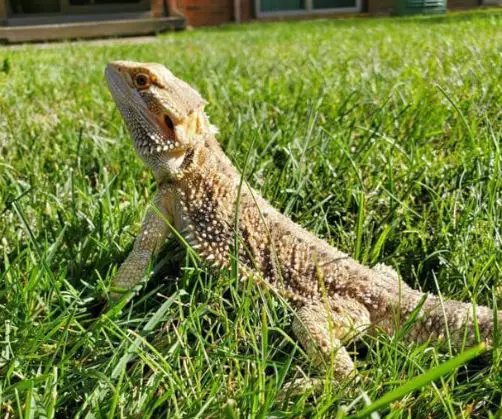
Although brumating is such a natural, instinctual part of a dragon’s life.
But there are still ways for you to keep your beardie from brumating.
However, you should remember that the only reasons for this are that they are not healthy enough to do without food for that long or they are under a year old.
However, preventing it is not a good option for some reasons.
Firstly, some are so prone to brumation and can fall into such deep sleep.
Secondly, your beardie will be more likely to undergo a slight change in personalities such as aggravation, stress, and even some hostility.
Therefore, it is better for you to consult a vet before making a decision
If your vet advises you to prevent/stop your pet from brumating, the following tips should be considered.
1. Increase Handling Time
One of the best ways to stop brumation is to keep your pet stimulated and active by handling him more.
In specific, you can bring him out of the tank, take him outside, or allow him to absorb sunlight.
2. Increase Their Daylight Hours
Turning the light on longer in the tank is also an efficient way to get a beardie out as one of the triggers for brumation in the wild is less daylight.
Therefore, you should keep around 14 to 15 hours of basking and UVB per day.
In this way, your pet may think it’s quite sunny and find it unnecessary to brumate. And you stand a good chance of shortening the brumation period.
Frequently Asked Questions About Bearded Dragon Brumation or Dead
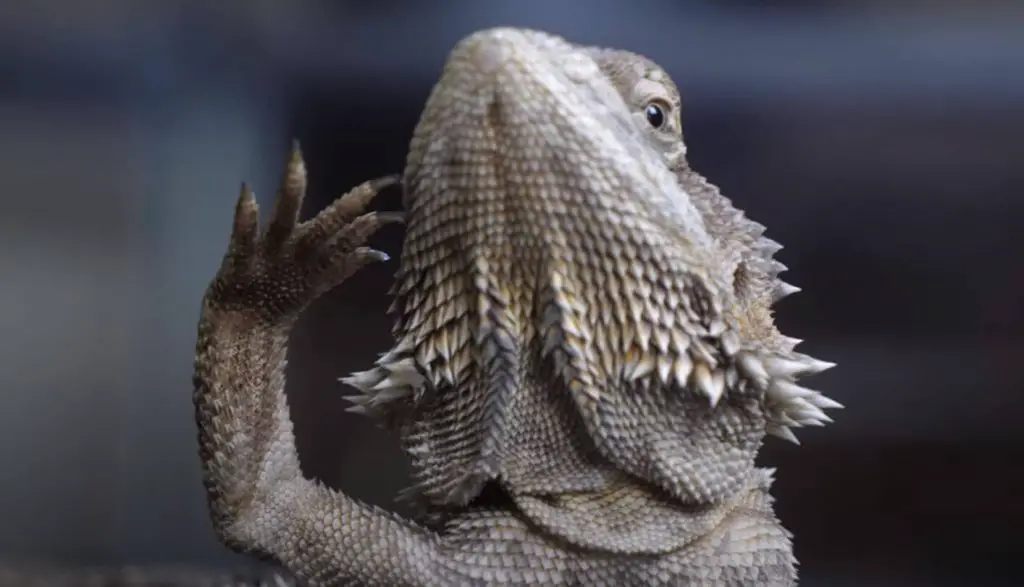
1. At What Age Do Bearded Dragons Brumate?
Most BDs that are at least 10 months to one year old will start brumating. And, they tend to enter this kind of hibernation in late autumn and emerge in spring as temperatures rise and the days begin to get longer.
2. Do All Bearded Dragons Brumate?
Most BDs typically don’t go into this activity when they’re under a year old.
However, when they are old enough, both males and females bearded dragons are more likely to brumate, with males usually emerging from their deep sleep before the females.
However, in captivity, beardies kept under optimum conditions, will not brumate at all.
Read More:
3. Why Do Bearded Dragons Brumate in Captivity?
In captivity, although you try to supply your pet with enough food, warmth, and light to keep it healthy year-round, you still notice that your bearded dragon looks dead.
That is because brumation is an innate behavior of dragons, and it is completely natural and 100% safe for it.
In this period, their biological clock may take over and tell its body to brumate for a while
However, not all of them will brumate in captivity, and some don’t even brumate in winter but in Spring or Summer.
4. Is My Beardie Dead or Hibernating?
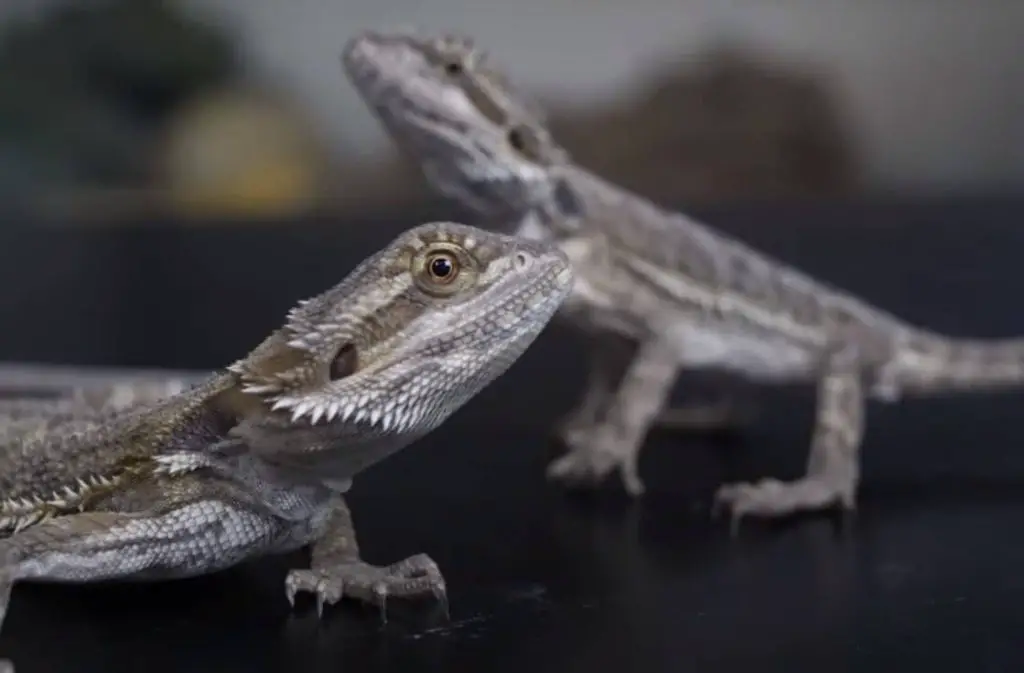
You may be confused with three terms: brumation, hibernation, and estivation, and don’t know how to differentiate them.
While the former is known as the hibernation for cold-blooded animals who will move on warmer winter days and find water, hibernators will be in a deep sleep and not move at all.
Meanwhile, estivation is when animals are dormant because of hot and dry weather conditions.
5. Do Baby Bearded Dragons Die Easily?
If your baby dragon dies very quickly, it must be a parasitic infection.
Therefore, you are highly recommended to have a slightly older beardie as this will give you a better chance of his survival.
Conclusion
Now, we are sure that you can fully understand the process of brumation. And, you will not be confused with whether your bearded dragon brumation or dead. Either beardie brumation or beardie dead.
Furthermore, you will be able to know how to care for a brumating beardie, or even how to stop a beardie from brumating altogether. If you have any questions, please comment below and we will help you.
1. Size and Build:
- Medium-sized Lizard: Bearded dragons typically range from 12 to 24 inches (30 to 60 cm) in length from head to tail.
- Robust Body: They have a sturdy, slightly flattened body structure with a wide, triangular-shaped head.
2. Skin and Scales:
- Spiky Appearance: Rows of spiky, elongated scales along their sides and back, which can puff up when threatened or during displays of dominance.
- Variety in Color: Bearded dragons display various colorations, including shades of brown, tan, yellow, or red, often with patterns or bands across their body.
3. Facial Features:
- Beard Pouch: A distinctive throat pouch (beard) that can darken or puff up, especially during stress or to regulate body temperature.
- Prominent Eyes: Large, round eyes with a keen sense of vision and often displaying a calm demeanor.
4. Limbs and Tail:
- Clawed Limbs: Four sturdy legs with sharp claws, aiding in climbing and gripping surfaces.
- Long Tail: A long, tapering tail that stores fat and helps with balance during movement.
5. Head and Mouth:
- Rounded Snout: A broad, rounded snout with rows of small, pointed teeth.
- Tongue Sensory: A forked tongue used for sensory perception, especially for detecting smells.
6. Gender Differences:
- Sexual Dimorphism: Male bearded dragons tend to have larger heads and bodies, along with more pronounced beard displays during breeding or territorial encounters.
7. Adaptable Features:
- Camouflage Abilities: Capable of changing skin color slightly to regulate body temperature or blend into their environment.
8. General Behavior:
- Docile Nature: Known for their relatively calm and docile temperament, making them popular pets among reptile enthusiasts.
Bearded dragons possess distinct physical traits, from their spiky scales to their unique throat pouches, making them easily recognizable among lizard species. Their robust build, varied colorations, and characteristic behaviors contribute to their charm and popularity as pets.
Further Reading:
- Carolina Custom Cages Terrarium Review
- 8 Best Basking Rocks for Beardie: What Is the Best Choice?
- 10 Best Thermometers for Beardie: How to Choose the Best One?
- 5 Best Beardie Lighting Setups for Beardie Lovers
- 9 Best Heat Lamps for Beardie: Natural Habitat Provided

